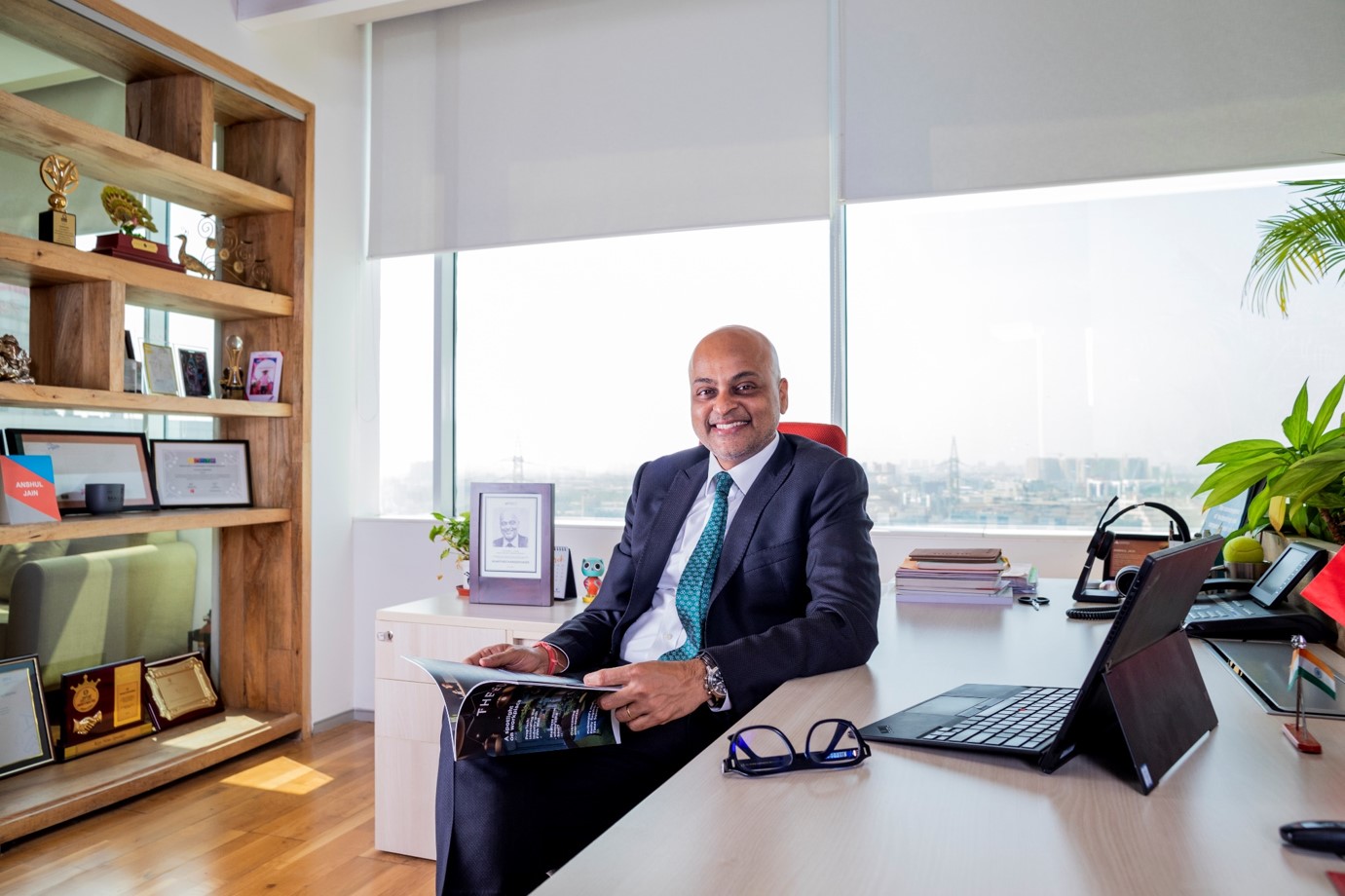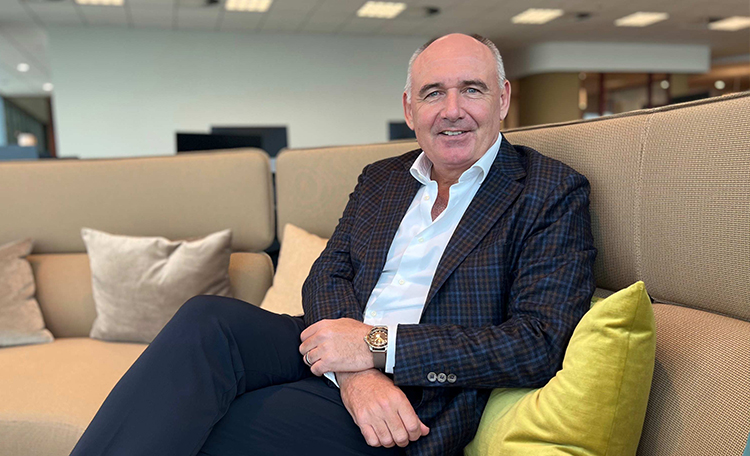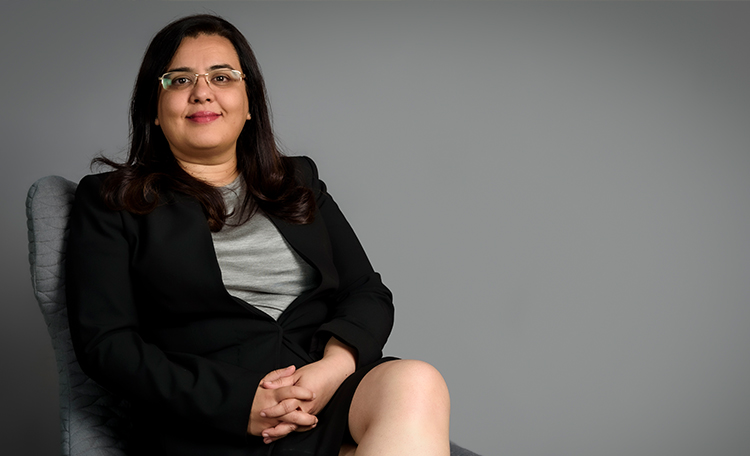Q. Anshul, you are the Head of Cushman & Wakefield’s Asia Pacific Tenant Representation business. What trends are you seeing in leasing activity among your clients?
There are a number of issues we are consistently hearing about right now.
The first is clearly a relook at portfolio strategy. Before the pandemic, most real estate strategies were based on concentrating portfolios rather than on creating a distributed portfolio. Most companies would go for a larger campus in one city or one location; now they are talking about more geographic dispersion. So instead of 2 million square feet [186,000 square metres] in one location, they are now investigating and sometimes moving to 500,000 sqft [46,000 sqm] in four different locations.
The second is how spaces are designed, and this has changed as a result of how the space is being used] Pre-pandemic, effectively 70 to 80 percent of an office was workstations for individuals whereas now we are seeing maybe 15 to 20 percent more amenities in the office. More companies are deciding that the office is going to be used for more collaboration purposes, with more need for social spaces and more focus on hospitality as a means of helping to drive productivity and connection. So, we are seeing the percentage of floor space being redistributed from workstations to collaborative spaces.
Third is the rise of ESG [environmental, social and governance] within the corporate decision-making matrix. Pre-pandemic, if health and safety of the employees and your building’s carbon footprint had a combined weighting of between 10 and 15 percent, post-pandemic I would say it is now a good 20 to 25 percent. As well as people asking for a safe building environment, most companies have committed to being carbon neutral by 2050 or sooner, and building occupancy creates a lot of carbon footprint, so that is causing a very significant shift in people’s thought processes.
And fourth is the use of flex offices, which is quite closely linked to point one about changing portfolio strategy. The reason for this is that a distributed portfolio brings with it more management considerations and complications, unless someone else is managing it for you, like a flex provider. We have seen a quantum shift in the enterprise offerings of flex office providers, who are now willing to do bespoke fit-outs and have almost become a capital provider for occupiers who, coming out of the pandemic and thinking about recession, are wanting to conserve their capital.
Q. Let’s go through one by one. What is driving the move towards more distributed portfolios?
On a country level, many markets are seeing secondary cities gaining traction post-COVID. This started during the work-at-home period when many people moved out of cities and migrated back to their hometowns, or to smaller cities, or to their holiday homes. Now some companies are saying, ‘we’ll bring the office closer to you, as opposed to all of you coming back’.
This is not to say that the region’s prime cities have lost their appeal, but that we are seeing an acceleration in the development of secondary and tertiary cities. It is also happening at the peripheries of cities. Whereas previously employees might have travelled two hours to reach the office, now we are seeing companies open different campuses in different parts of the city to be closer to people’s homes.
The other reason for moving towards a more distributed portfolio is from a business continuity planning (BCP) perspective. Whether it’s a city getting locked down or the potential for flooding or some other reason, companies are now saying, “Okay, if there is a real chance of flooding in City A then there is value in having an office in City B as well.” This was already happening to some extent pre-pandemic, but it seems that post-pandemic, the BCP discussion has accelerated.

Cushman & Wakefield’s Head of Asia Pacific Tenant Representation and Managing Director, India and South-East Asia, Anshul Jain.
Q. Moving on to workplace, we hear a lot about companies downsizing their office space at the same time that jobs growth remains either stable or strong. What are your thoughts on how companies are balancing these competing demands?
It depends on which part of the world you are in. Speaking to a number of corporate clients over the last two or three months, one of the questions I anecdotally ask is, ‘If your employee headcount at the end of 2019 – so pre-pandemic – was 100, what is your average employee strength today?’.
In India, most people would say between 150 and 200, so it's between 50 and 100 percent growth in headcount. In most of the other markets there was also growth, albeit on a smaller scale.
Now overlay the hybrid or working-from-home factor. Pre-pandemic, office utilisation was probably 70 to 80 percent on average across Asia Pacific. Post-pandemic, that number is probably closer to 60 percent, which is still well ahead of what we are currently seeing in the U.S. and Europe. But when you factor in the headcount growth, most companies still need more space.
There is also the need for more space with the de-densification of offices – if you are creating more social, more hospitality-oriented spaces, you actually need more space per employee.
So we are seeing more people and more square foot per person – these are drivers of office uptake. Then you have hybrid working – a benchmark seems to be 60 percent working from the office – which is a reduction. But I would say the biggest parameter here is the growth in headcount, so overall I think most companies still need more space.
Q. Do you see this changing?
I don’t think that the office market in Asia Pacific will slow over the next three years. There's always a quarter here, a quarter there where things may stop or slow down. But if a global recession hits, I believe we will actually see outsourcing to APAC increase.
Traditionally, when the unemployment rate is high there has been opposition to outsourcing. But in the US and some other markets, the unemployment rate is at historic lows as companies have expanded and people have left the workforce for a variety of reasons. So I think with the very low unemployment rate in the West, combined with increasing cost pressures including labour costs, we can expect to see more jobs growth in Asia Pacific and commensurate demand for space.
“Where we have seen higher return-to-office rates, corporate real estate decision-making has been faster. But in many markets, occupiers are still in pause mode.”
Q. You also mentioned ESG and employee experience are having more influence on corporate decision-making. How are occupiers responding to these considerations given the increased cost of doing business?
I would say that, if you look at large corporates, cost pressure is not new. Except for the unicorn community, which ran on a different operating model, I haven’t heard any corporate in the last 10 years say they don’t care about cost.
But while cost is obviously a huge pressure, I think people are actually spending more per square foot in rental to go into better buildings – what we call ’flight to quality’. And this is still happening because the employee value proposition is all encompassing, especially in the services economy. And this has not changed over the last 10 years despite the cost pressure.
The counter-argument to cost is the opportunity cost – the cost of not having a good fit-out or not being in a good quality building – and what that means for talent retention and attraction and then ultimately for productivity and viability.
That being said, we may see a pause right now as companies wait to see how this threat of recession unfolds. But almost every occupier wants their people back in the office.
Q. Lastly, you mentioned flex. What is driving the growth of flex in some markets and how do you see it impacting the wider region?
If a recession happens, people will likely decide to become more visible in the office rather than risk losing their job. And if everyone comes back to the office then suddenly companies may need more space. In this scenario, I think flex space will benefit because companies won’t want to spend money, but they will need to accommodate their employees.
Flex also provides a solution to the other issues occupiers are facing right now; it’s a solution for occupiers with more distributed portfolios who can rely on a flex partner to manage their real estate across multiple cities, while also freeing up the capital required for fit-outs.
India is seeing a huge surge in flex right now, and I’m pretty sure this trend will start touching some of the other markets in the region as enterprises realise the innovation that that flex offers. A lot of this comes down to education – once occupiers realise it is not just co-working, they are usually quite receptive. So it will be interesting to see how the scenario plays out.
Anshul Jain is Head is Head of Cushman & Wakefield’s Asia Pacific Tenant Representation business and Managing Director of India and South-East Asia. The APAC Tenant Rep team provides leasing solutions for clients operating across multiple geographies on an as-needs basis.







